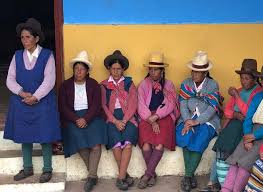January 2023
In the 1918-19 influenza pandemic, Brazil faced twin problems: infection and hunger. More than a century later, Covid-19 again brought forth these interconnected problems. Brazil’s society and government changed enormously in the last century and epidemiology has advanced, nevertheless the 1918-19 influenza pandemic nonetheless offers lessons for Covid-19 and future pandemics.
As Covid-19 swept the globe, so did the phrase “unprecedented times.” Yet the current pandemic is not as unprecedented as one might think. The SARS-CoV-2 strain is unique, yet viral respiratory epidemics and their social-political repercussions are centuries old. During the 1918-19 influenza pandemic, Brazilian politicians struggled to mitigate disease while not exacerbating hunger or infringing on widespread norms of personal autonomy, as do politicians today. By tracing influenza from the nineteenth to the twenty-first centuries, Ian Olivo Read and Aldo Musacchio describe enduring challenges in one of the country’s first national histories of influenza.
In the article Influenza pandemics throughout Brazilian history (HCSM 29 (4), Oct-Dec 2022) Read and Musacchio draw on pioneering Brazilian experts like Liani Maria Bertucci-Martins, Cláudio Bertolli Filho, and Janete Silveira Abrão, in addition to archival sources on mortality and government responses from the nineteenth and twentieth centuries. Their research highlights the movement of influenza epidemics alongside social, political, and scientific perceptions. When the disease became epidemic in different regions and periods after 1890, mortality and municipal responses varied considerably. Read and Musacchio find that the first recognized Brazilian pandemic of influenza in the early 1890s killed thousands but was barely registered. Influenza appeared to “hide” behind other diseases; some were much deadlier during this period of yellow fever, cholera, smallpox, and tuberculosis.
When influenza returned in a more destructive form in the 1918 and 1919 pandemic, the disease was more deadly than historians have previously estimated. Only in the last couple of months has Covid-19 killed more Brazilians in overall numbers, but the 1918-19 pandemic killed many more as a percentage of Brazil’s population. Read and Musacchio draw comparisons to Brazil’s Covid-19 response to show how mitigation measures and government actions continue to be prone to politicization, despite a century of improved epidemiological understanding and social change. Governments find it difficult to mitigate disease outbreaks and balance conflicting priorities – such as health and personal autonomy.
The findings presented by Read and Musacchio rely primarily on newspapers, provincial reports, physicians’ statements, governmental publications, and other archival sources. These sources uncover the social-political discourse that accompanied influenza and shaped mitigation policies, or lack thereof. Here, remnants of “fake news,” denial of disease, and faulty remedies for influenza echo the media frenzy of the Covid-19 pandemic (Silva, 2017). Government publications and officials’ statements also demonstrate the striking similarity to current policies, as politicians inconsistently employing social distancing measures and failing to provide financial support to struggling families (Bertolli Filho, 1986). Read and Musacchio emphasize how the necessary policies for “‘diminishing agglomerations’ ran the risk of the ‘more terrible evil’: hunger, unemployment, and destitution of whole families” (11). This social historiography demonstrates how diseases do not exist in a vacuum, but are inherently shaped by society and politics.
The authors also analyze the effects of these policies and reactions on mortality rates, particularly in rural regions. Whereas previous estimates of death tolls relied solely on urban rates (Johnson, Mueller, 2002), Read and Musacchio may be the first to include rural estimates for the country, where the majority of the population resided until the late twentieth century. Based on a broader base of historical sources and regions, Read and Musacchio calculate between 266,000 and 590,000 people died in Brazil from the 1918-19 influenza pandemic. Rates varied from city to city, as we can see in the following figure:

Flu continued to be a serious problem after the 1918-19 pandemic. While the international community suffered from waves of influenza in 1957, 1968, 1976, and 2009, Brazil remained relatively untouched by this global threat. Read and Musacchio stipulate that this misalignment “with other infamous pandemics help explain why Covid-19 was discounted and derided,” offering a historical context and explanation to the current state of Covid-19 in Brazil (15).
Covid-19 and influenza are different diseases, but they are comparable. And as the first virus with comparable magnitude to the 1918-19 influenza, Covid-19 reminds Brazil that respiratory diseases remain a serious threat, as do the consequences of misguided health and economic policies. To see the Covid-19 pandemic as “unprecedented” discredits influenza’s role in more than a century of public health policies. Thus, to prepare for a healthier, more prosperous future, we must understand the history of influenza.
About the authors:
Ian Olivo Read, Professor of Latin American Studies; Co-Director of the Center for Race, Ethnicity, and Human Rights – iread@soka.edu (Aliso Viejo, California, United States)
Aldo Musacchio, Professor of Management and Economics– aldom@brandeis.edu (Waltham, Massachusetts, United States); Research Associate, National Bureau of Economic Research (Cambridge, Massachusetts, United States)
Read, Ian William Olivo and Musacchio, Aldo. Influenza pandemics throughout Brazilian history. História, Ciências, Saúde-Manguinhos [online]. 2022, v. 29, n. 4 [Accessed 6 January 2023], pp. 1013-1031.
References
ABRÃO, Janete Silveira. A História de Uma Epidemia: A “Hespanhola” em Porto Alegre, 1918. Boletim de Saúde Pública, v. 23, n. 1, jan./jun. 2009.
BERTOLLI FILHO, Claudio. A gripe espanhola em São Paulo, 1918: epidemia e sociedade. São Paulo: Paz e Terra. 2003.
BERTUCCI, Liane Maria. Influenza, a medicina enferma. Campinas: Editora Unicamp. 2004.
JOHNSON, Niall Pas; MUELLER, Juergen. “Updating the accounts: global mortality of the 1918-1920 ‘Spanish’ influenza pandemic”. Bulletin of the History of Medicine, p.105-115. 2002.
SILVA, Alexandre Caetano da. “Recife, uma cidade doente: a gripe espanhola no espaço urbano recifense (1918)”. Dissertação (Mestrado em História) – Universidade Federal de Pernambuco, Recife. 2017.








